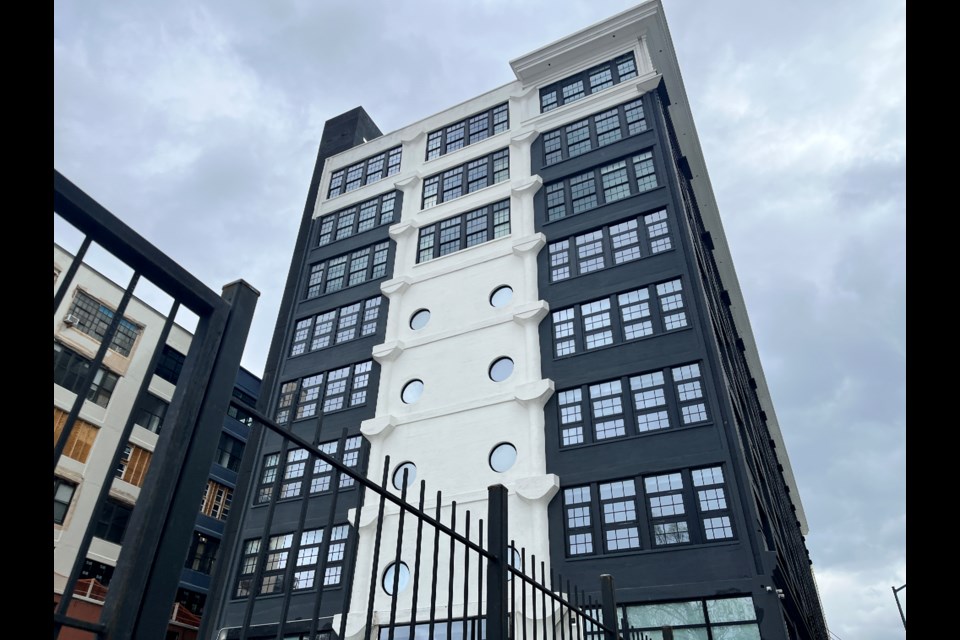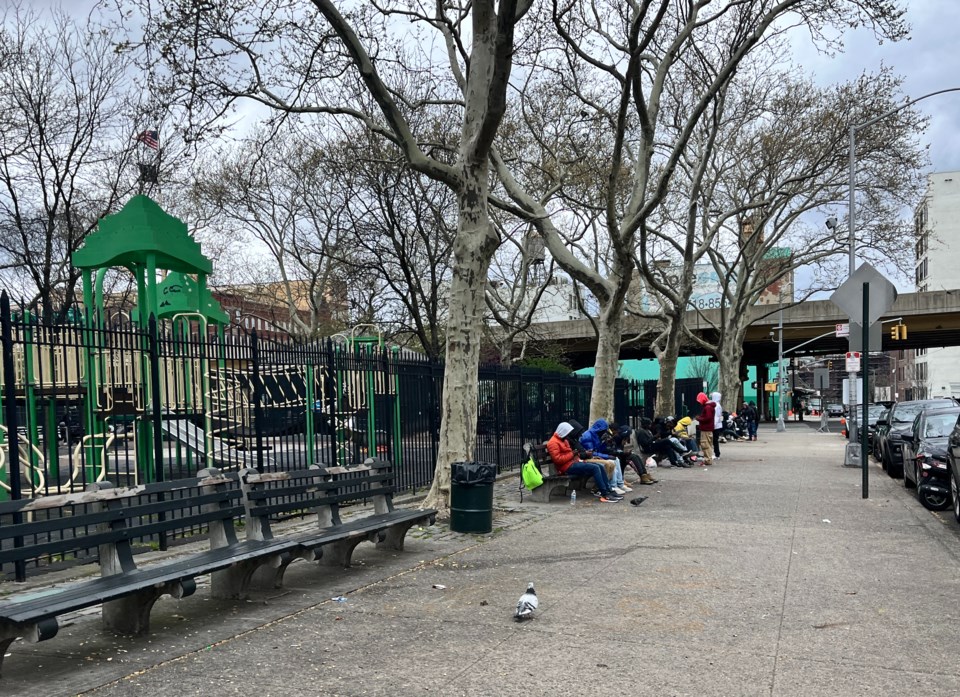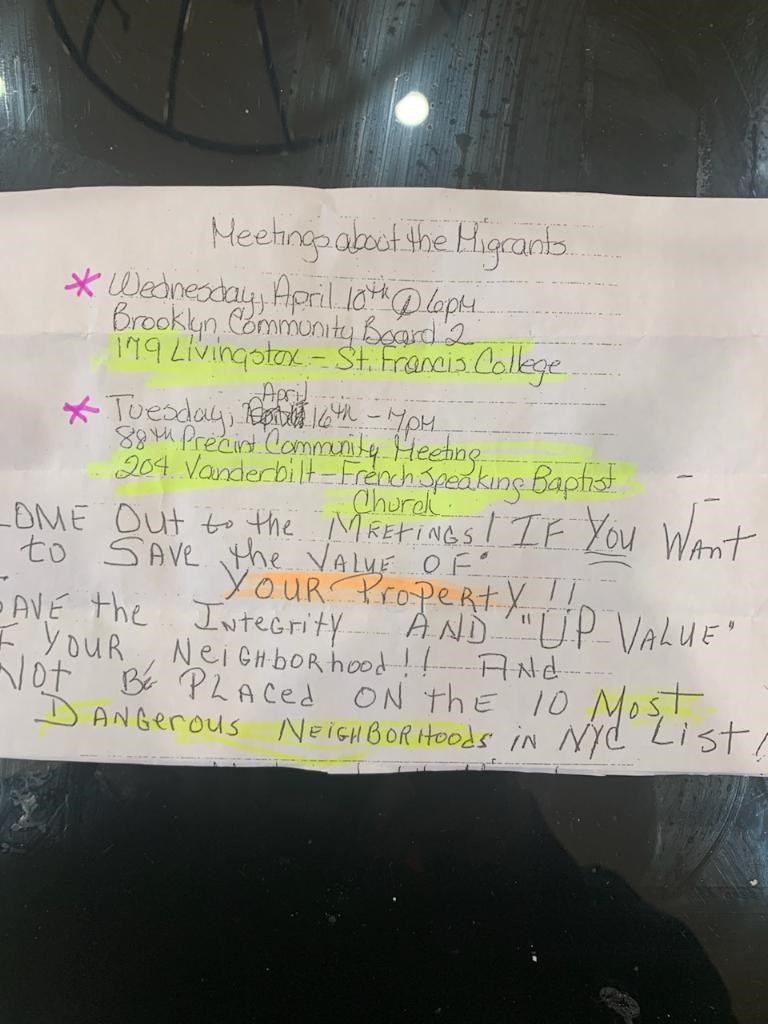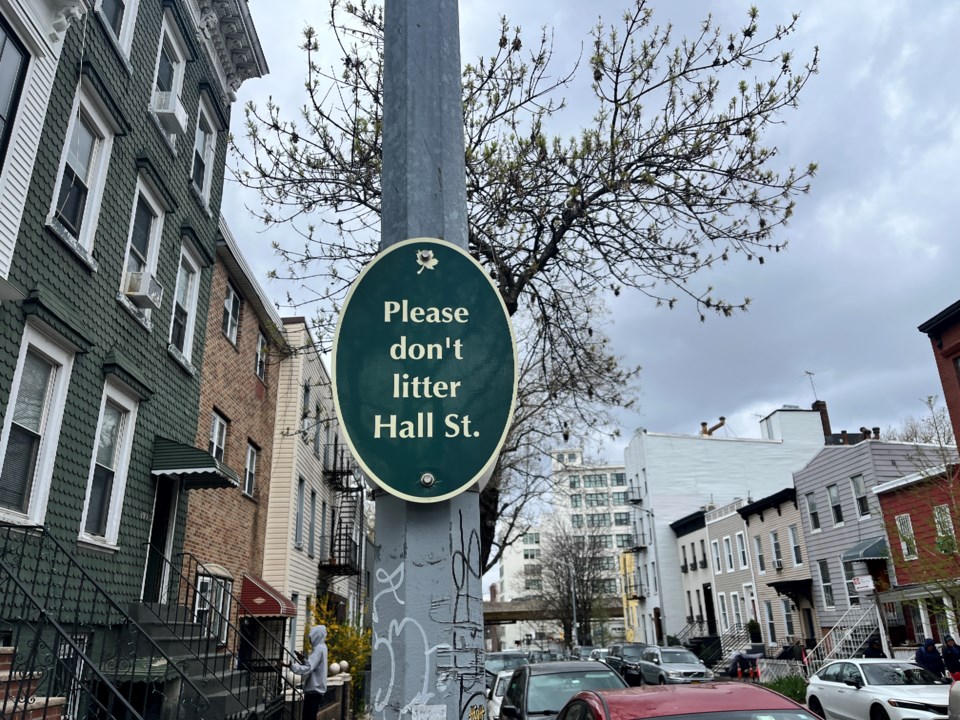On Friday, the city quietly opened a new emergency migrant shelter, located at 29 Ryerson Street, between Park and Flushing Avenues in Clinton Hill, Brooklyn, adding to the more than 3,000 asylum seekers who have arrived in the nieghborhood since 2023, and further unsettling local residents who complain the existing shelter has been poorly managed by the city.
The new migrant shelter, which sits just outside of the shadows of the Brooklyn-Queens Expressway overpass, is the second to open in the neighborhood in under a year. The first one-- inside a block-long, multi-building complex located at 47 Hall Street -- is just one block away.
About half a dozen Clinton Hill residents who spoke to BK Reader said they did not know about the opening of the new shelter, including a puzzled Hall Street resident, Mary Chang, who grew up in Fort Greene and has lived on Hall St for the past 25 years: “I don’t know much about the Ryerson [shelter]; I just heard about it,” she said. “I don’t know what the mission is. I don’t know what the goal is.”
Another Hall Street resident, who asked to be referred to as “M.G.,” has lived in Clinton Hill for more than 20 years. She said she'd heard another shelter was coming but was unaware it had opened already: “We heard rumblings about it, but nobody was giving us information directly or at the community board meetings.”
More than 189,200 migrants have come through the city’s intake system since the spring of last year, and the city now runs 221 emergency shelter sites. The city saw 1,500 new asylum seekers enter the shelter system in the first week of April, and it now has more than 119,000 people in its care, including 64,400 migrants, a City Hall spokesperson told BK Reader.
“We have used all of the tools available to manage this crisis, and this temporary emergency site will help us continue responding,” the spokesperson said.
According to public records, the building on Ryerson Street, a high-rise, is owned by the Sela Group, a Queen-based real estate company. The company was in the process of reconfiguring the former Mergenthaler Linotype factory as a mixed-used space that included a boutique hotel, according to the company website.
The Ryerson Street shelter will have 50 rooms available for single adults and will open a total of 383 rooms over the next few months. At capacity, the shelter will house 765 people, with two people in each room, according to the spokesperson at City Hall.
Ryerson Street was quiet this past Saturday morning, as several men and women with new identification lanyards filtered out of the brand-new shelter.
One new arrival from Senegal, Isse, 29, told BK Reader that his first attempt to immigrate to Europe several years ago was unsuccessful. His second attempt to America was a success, and he said he was simply glad to find a bed at the Hall Street shelter. His goals were to get his papers in order, learn English, find a job and eventually start a family.
“It is what I want: a family," he said. "But first, I need a job.
"Everyone here wants to work,” he said, glancing over to the two dozen men who were hanging in or outside Washington Hall Park, on the corner of Hall Street and Park Avenue. Some were sitting eating on a bench, while others lined up to use the park bathroom as the playground sat empty, void of children.
Vernon Jones, a Clinton Hill resident, said he understood that the city needs to house the asylum seekers somewhere. However, he added, he has noticed an abundance of disruptions to life in the neighborhood he has called home for 30 years. He also said he was unaware of the new shelter opening right up the block.
Jones recalled that, recently, when his son and grandson went to Washington Hall Park to play basketball on the newly refurbished courts, a group of migrants asked them to move so they could play soccer.
“I mean, what’s going to happen in the summer when everyone wants to be outside?” Jones said.
Neighbors are complaining about the increase in package and delivery theft, he said, recounting an incident where his son’s food delivery was stolen moments after the bag was left at the doorstep.
Area laundromats are constantly in use, leaving residents nowhere to go to clean their clothes, Jones said.
“When the city doesn’t provide the migrants with resources they need, like washing machines and open space, and it starts to affect resident resources, then I say there’s a problem,” said Jones.
And the complaints are mounting. Jones received a note on his door last week inviting him to his community board meeting where a group of residents planned to voice their concerns.
“We’re seeing a lot of despair from the asylum seekers and migrants,” Alia McKee, a resident of Clinton Hill, said at that Brooklyn Community Board 2 meeting at St. Francis College on April 10. “The sheer concentration makes providing a safe and clean environment for both shelter and neighborhood residents impossible.”
Other area residents at the meeting expressed their desire for a more equitable distribution of the emergency shelters throughout the city.
For months, New York City Mayor Eric Adams has been saying his administration is doing its best.
“We have used all of the tools available to manage this crisis and this temporary emergency site will help us continue responding. We continue to urge the state to redouble its efforts to resettle thousands of eligible migrant families across the state and the federal government to provide New York City with meaningful financial support and migrants with the immediate right to work,” said an email statement from City Hall.
So far, the city has opened over 200 emergency shelters; set up navigation centers with support from community-based organizations to connect asylum seekers with critical resources; enrolled tens of thousands of children in public schools through Project Open Arms; and created an Asylum Application Help Center to help individuals submit approximately 40,000 asylum, Temporary Protected Status, and work authorization applications over the past eight months.
As a result of these policies, more than 60% of the asylum seekers who have come through the city’s intake center have left the city’s care, according to the spokesperson.
“I am very empathetic and compassionate to the migrant situation and those seeking asylum, but what I’m not empathetic and compassionate about is putting these centers in residential areas,” M.G. said. “There’s plenty of warehousing space; there’s space along Red Hook; there are landlords sitting on properties that can do eminent domain for an emergency situation.
“So I’m very angry that they decided to put this into a residential area, especially with no communication with the residents that live in the area. There was no communication from Crystal Hudson’s office who’s supposed to be a representative.”
BK Reader reached out to the office of City Councilmember Crystal Hudson over the weekend and on Monday for a comment, and as of 1:00pm on Monday, April 15, has not heard back.
In a few months, the Department of Homeless Services, along with a nonprofit organization, will take over management of the shelters, said the City Hall spokesperson, whereby families with children will stay in the current new shelter, and the single adults will be moved elsewhere.
Still, although many long-time residents are sympathetic to the city’s struggle to deal with the influx of migrants, the pile-up of trash, as well as the all-day loitering, is testing everyone’s nerves.
“When children can’t play in the park, that’s a problem,” Jones said.
Mayor Adams continues to point the finger at both the state and federal governments, saying they need to do much more in paying their fare share.
"We continue to urge the state to redouble its efforts to resettle thousands of eligible migrant families across the state and the federal government to provide New York City with meaningful financial support and migrants with the immediate right to work,” City Hall wrote in an email statement.
BK Reader freelance reporter Shenal Tissera contributed to this report.







